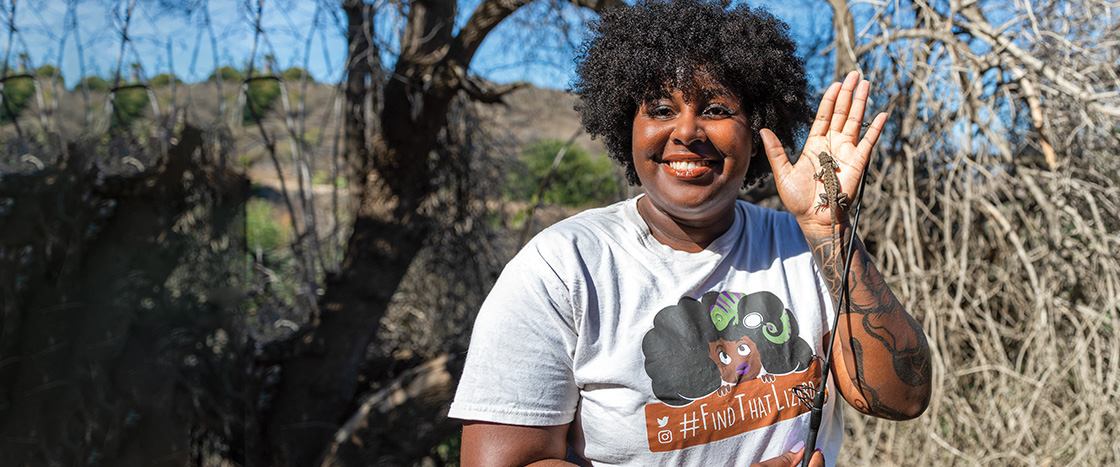TARA PIXLEY FOR HIGH COUNTRY NEWS
Using a fishing pole and a loop of string, McGee gently lassos lizards to study.
From 2016 to 2021, Earyn McGee spent countless hours hiking through the mountains of southeastern Arizona. She was searching for lizards as part of a research project at the University of Arizona.
McGee made herself an unusual tool for the job—a “lizard lasso.” She created it from a fishing pole with a loop of string at the end. She would sneak up on a lizard, slip the loop over its head, and gently catch it. After studying it, she would let it go.
“It’s kind of like fishing and lassoing lizards at the same time,” says McGee. “It’s very fun!”
From 2016 to 2021, Earyn McGee spent countless hours hiking. She hiked through mountains. The mountains were in southeastern Arizona. She was searching for lizards. This was part of a research project at the University of Arizona.
McGee made an unusual tool for the job. It was a “lizard lasso.” She created it from a fishing pole. McGee added a loop of string at the end. She would sneak up on a lizard. Then she would slip the loop over its head. She would gently catch it. After studying the lizard, she would let it go.
“It’s kind of like fishing and lassoing lizards at the same time,” says McGee. “It’s very fun!”

